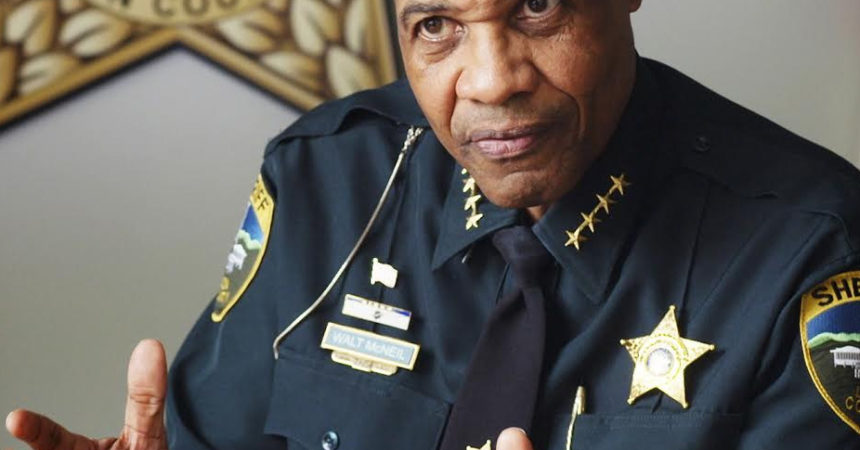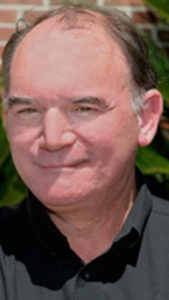
Statistics don’t tell all about county’s high crime rate

Leon County Sheriff Walt McNeil points to homelessness and poverty as two reasons for Tallahassee’s high crime rate.
Photo special to the Outlook
By St. Clair Murraine
Outlook staff writer
Looking beyond the numbers is one way to determine how Tallahassee would be affected by data in a recent FDLE report that ranks crime in the city as the highest in the state.
That’s the opinion of a Florida State criminology professor, who has done research for the Florida Supreme Court, FDLE and private organizations. William Bales also said the report doesn’t mean that Tallahassee is a dangerous place to live.
“If you really want to determine empirically if Tallahassee is an aberration relative to the problem of crime; you really have to look beyond the seven index crimes,” Bales said. “Crime rates weren’t designed and are not capable of saying this is the true number of crimes in a community. It is an indicator. It’s variation over time; city, country, state.”
Almost nine decades ago, the federal government established the standard for documenting crimes in seven categories that are known in law enforcement as uniform crime reporting. That is comprised of seven indexes — murder and non-negligent manslaughter, rape, burglary, aggravated assault, larceny and motor vehicle theft and arson.
Since the FDLE report was released two weeks ago, government and law enforcement officials have been weighing in as they search for answers to explain the problem. It’s even caused concerns in other quarters that aren’t related to law enforcement
.
Leon County’s crime rate during 2016 showed an uptick in property crimes, according to FDLE’s account. However, while violent crimes declined just over 11 percent, the county remained ranked fifth in the state in violent crime.
But Bales said the report doesn’t “necessarily mean Tallahassee has an endemic problem.”
The report is an indicator of crimes in counties with a population of more than 100,000, in which the county ranked number one per capita in property crimes. Overall, more than 400 more crimes were reported in 2016 compared to 2015.
Bales said he couldn’t find the report to be overly alarming because it could be that the area has a community that is more likely to report a broken mailbox as a crime. He also said there are other reasons that arguably aren’t factored into the reporting of crime.
There also are other reasons to take into consideration, said Leon County Sheriff Walt McNeil.
“Drugs, homelessness, domestic violence are all contributing factors to the crime rate,” McNeil said. “All of those components drive the crime problem.”
Christic Henry, who chairs the Council of Neighborhood Associations, agrees with Bales’ assessment on the crime report, saying that social issues such as poverty and lack of opportunities should be considered as causes. For instance, she said, young people between the ages of 14 to 19 seemingly don’t have enough to occupy them during the summer months, a time when experts say crimes committed by young people tend to escalate.
“We are crazy for not trying to figure out how to get those young people plugged in and get their skills and energy; bringing value to the community,” Henry said. “The problem is idleness. If we can get these kids engaged in some sort or profitable activity; I mean where they are making money and they don’t have to go and steal, sell dope and smoke dope. The young women, same deal; engage in work; engage in things that add value to the community.”
Henry praised the efforts of city and county governments to curb crime, but said communities have to re-institute a neighborhood system of being vigilant. Community engagement shouldn’t stop there, Henry said.
“We have a dynamic community of talented people who are committed,” she said. “But I think we as a community have to step up to make sure that there is systemized access to resources that can help put it in front of all of us; whether it be youth, college age, young adults or adults to have access opportunity to be economically stable. I think that will go a long way for all of us.”
Another first step, said McNeil, would be to tackle to issue of poverty, which he sees as perplexing. Part of the complexity is that poorer communities often have a high number of single parents with multiple children who are living on minimum wage.
“We in Tallahassee have to come to grips that we are a community that is divided between the haves and have nots,” McNeil said. “We have to come to grips with how do we deal with those realities and get serious about it.”









